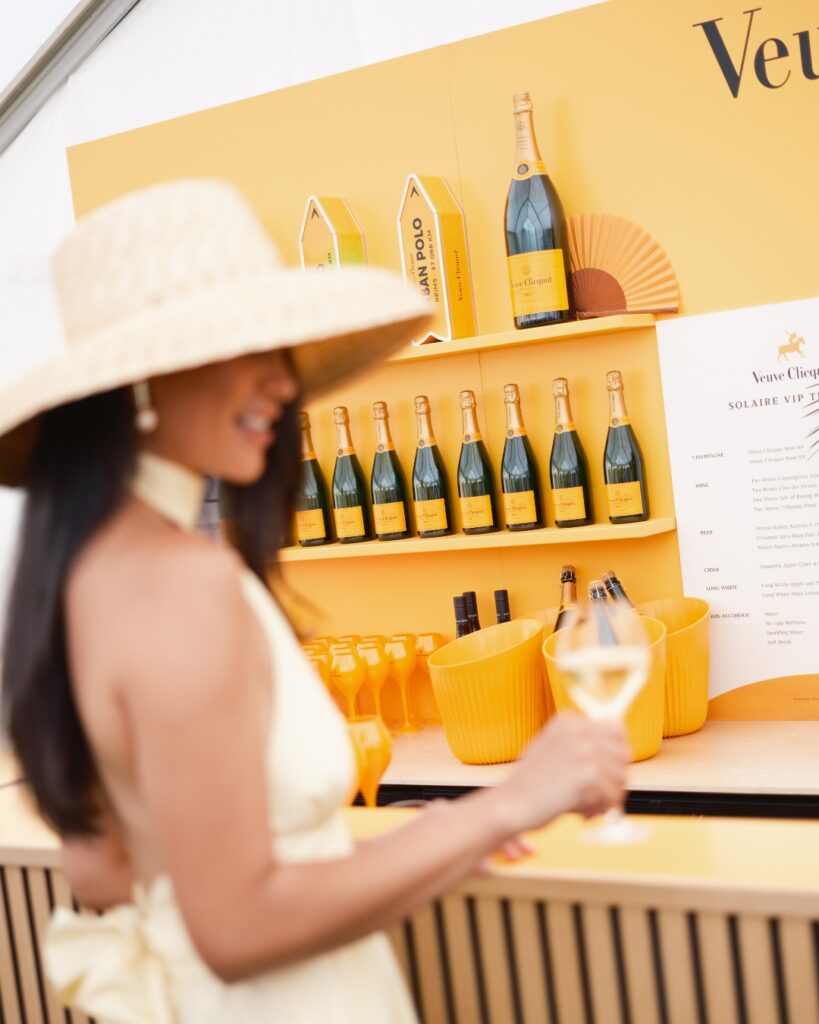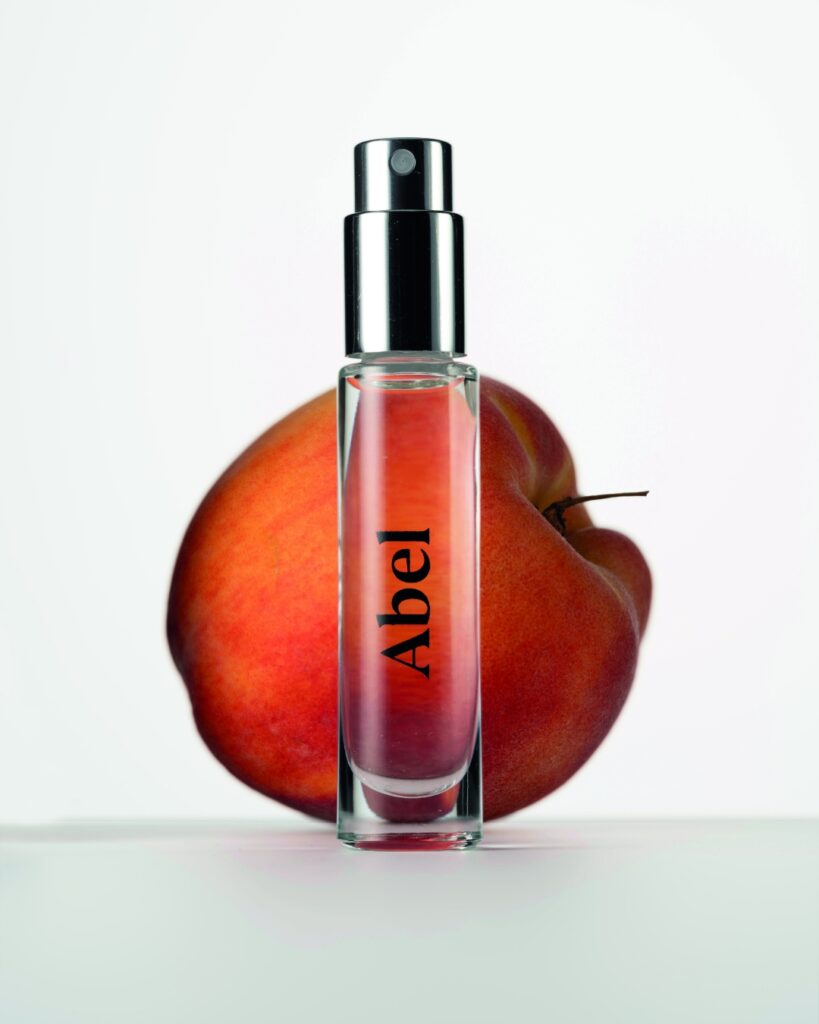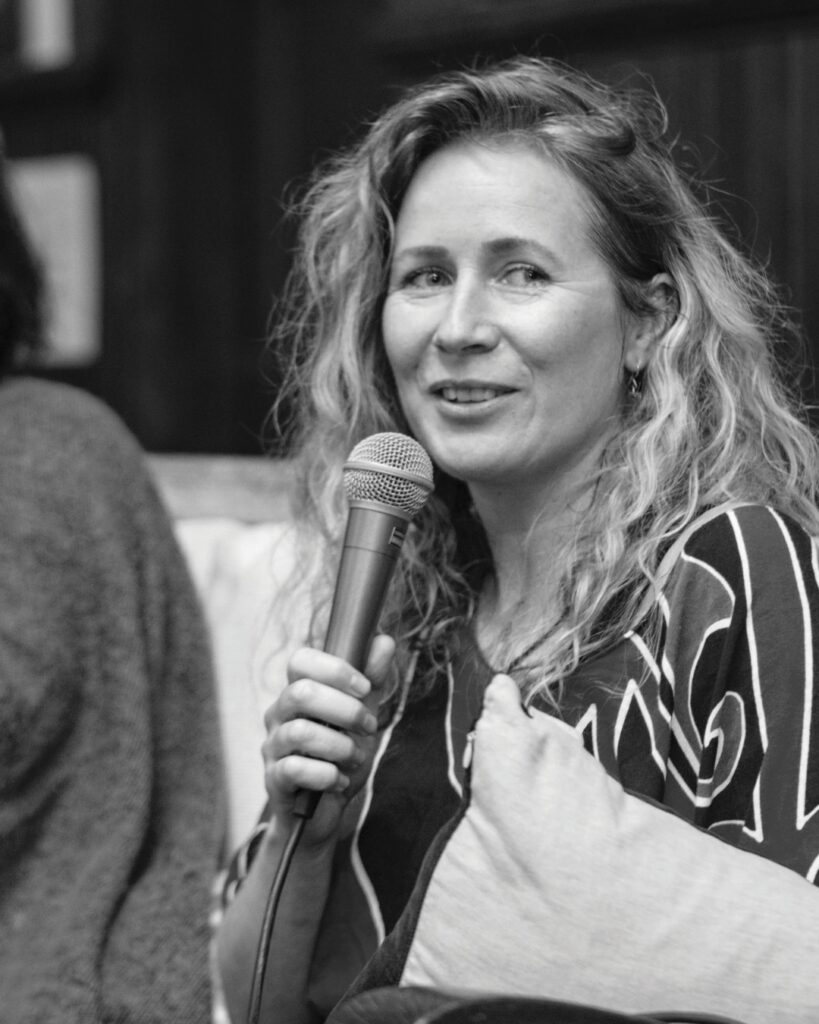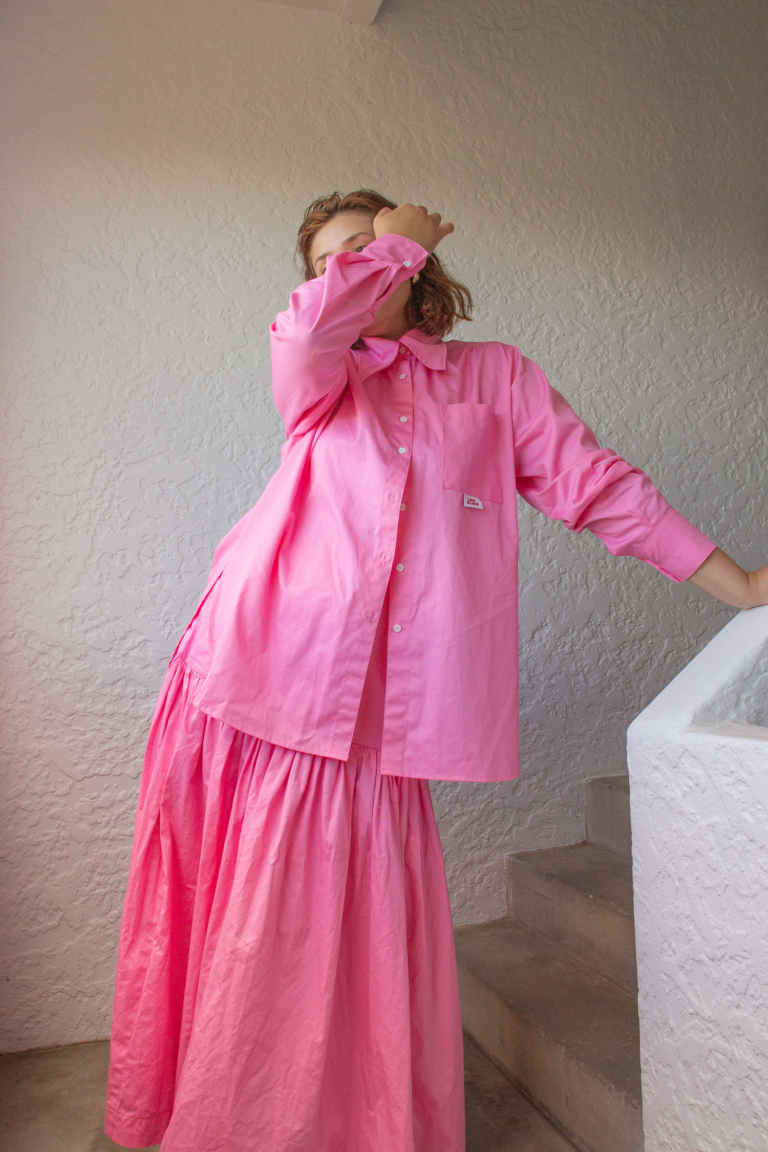
In recent years, airtime in the sustainability conversation has largely been dominated by a focus on the materials and supply chains of the new; however, although there’s no denying the importance of such things, attitudes are starting to shift. Regardless of how consciously a garment is crafted, there’s power in asking the question: why am I even buying this?
For those who are ready to commit to a new purchase, a new option is on the rise: made-to-order. Buying a garment that’ll be created especially for you obviously trumps overproduction. Supporting a company that isn’t adding any excess waste to an already overburdened world seems like a no-brainer too.
But after years of engaging with fashion at a rapid-fire pace, how easily can shoppers change their ways?
Frances Lowe launched her Auckland-based label Loclaire in July of 2019. After a six-year stint at Ruby, she moved to Shanghai with her partner and took up a role as a product developer at H&M— a move that ultimately led her to start a brand of her own.
“It was so different to anything I’d ever experienced,” she says of her time at H&M. “That was basically the start of my increased awareness around fashion and the industry, I guess, the parts of it that I wasn’t into so much — and it was kind of an awakening for me. I think living in Shanghai as well — the number of people over there and the amount of consumption all just became quite overwhelming.
“It started me off on this track of exploring what I wanted to do, and what I cared about, and the values I wanted to live and work by. We moved back to New Zealand at the end of 2018 and, to be honest, it was a weird time when I felt like I either needed to get out of the fashion industry or completely own it for myself and move forward exactly the way that I wanted to.”
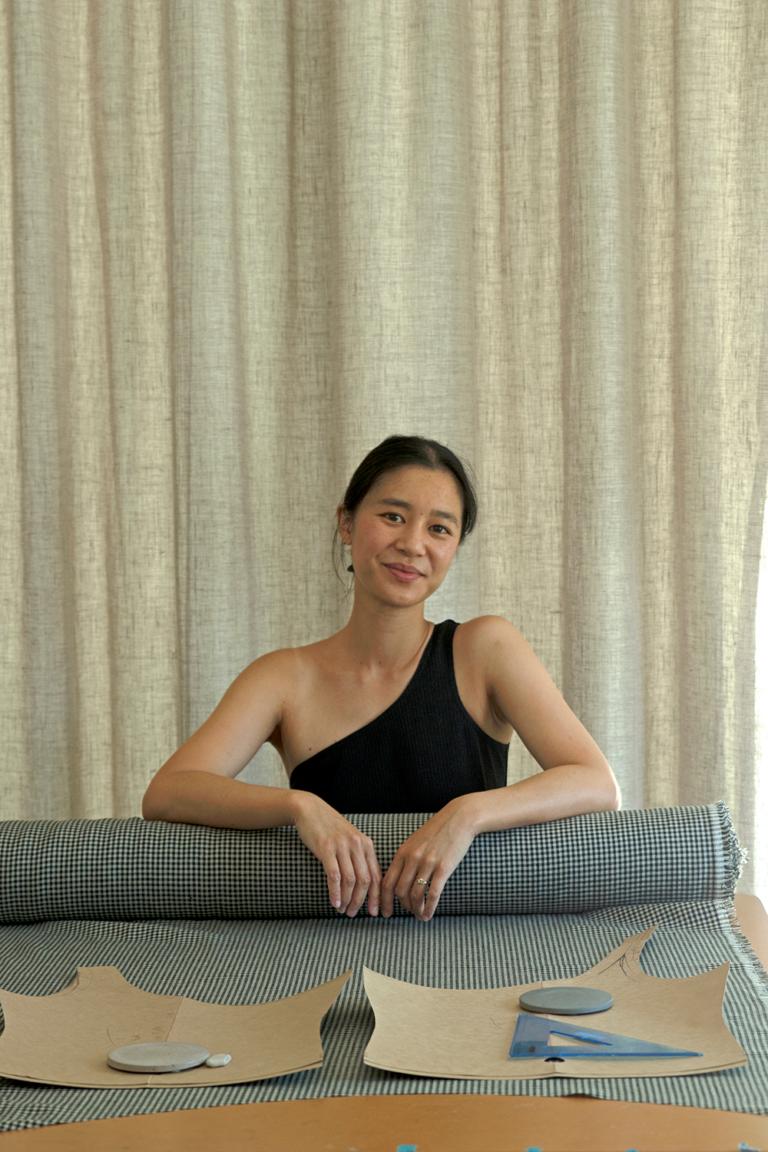
For Lowe, subscribing to the notion of “being the change you want to see” has paid off. Although she didn’t initially launch her label with the intention of following a made-to-order production method, the change came about thanks to a period of reflection during the first wave of lockdowns in 2020.
“A lot of it comes back to making a meaningful contribution to both the fashion industry and the bigger picture,” she says. “The bigger picture was about removing… If we remove and strip back all the things like consumerism and why people shop so much, then I think made-to-order really makes a lot of sense for us.
“When people shop these days, it’s so much about instant gratification, and staying on trend and up with your friends and social media and all of that sort of stuff. I just wanted to explore more. If that sort of thing was taken away, what would people be buying? Would their reasons for purchasing be different?”
According to a report by the Global Fashion Agenda, the fashion industry’s emissions are forecast to hit 2.7 billion tonnes a year by 2030. With numbers like these only eight years in the future, conscious consumption is no longer a luxury, it’s a necessity. Lowe notes that fashion’s waste problem is just another reason why made-to-order is a win.
“The really good thing about made-to-order is that every piece that’s bought already has a home. I only make it after a customer has purchased it online, so I’m no longer holding any excess stock. That means I can offer more honest pricing. I don’t need to inflate the mark-up, and I don’t need to go on sale because there isn’t any excess stock that I need to account for.”

As for clothing that no longer has a home, stomach-churning images of endless mounds (at least 39,000 tonnes) of discarded clothes dumped in Chile’s Atacama Desert come to mind. First published by global news agency AFP, the confronting photographs circulated on Instagram in November last year, a poignant and hard to ignore visual of the environmental strain fast fashion continues to put the planet under. But are horrific pics like these enough to instil four weeks of patience into consumers after they click ‘Add to cart’?
“It’s such a different process to traditional production and retail,” says Lowe of made-to-order. “I guess the first hurdle to overcome was getting our customers on board, and translating it in a way that’s easy for people to understand and easy for people to understand why we’re doing it as well — so it’s kind of a two-part approach.
Part one: educating on why we’ve changed to it. Part two: everyone getting their head around buying something and not getting it straight away. [It] is not the way that we’re used to shopping — I understand that it can be a bit of a mental hurdle to get your head around at first.”
It is worth noting that when it comes to taking a conscious approach as a shopper, there are myriad options that you should explore before you even consider buying something brand new, such as mending clothes you already own, thrifting second-hand pieces, renting for special occasions, and so on.
“I really want more people to know about made-to-order and I don’t even say that from a business point of view,” says Lowe. “I just think it’s so great, whether it’s from my brand or Rachel Mills or someone else who’s offering made-to-order. I feel like if customers are generally more aware and open to this process, then it’s really good for the industry as a whole.”
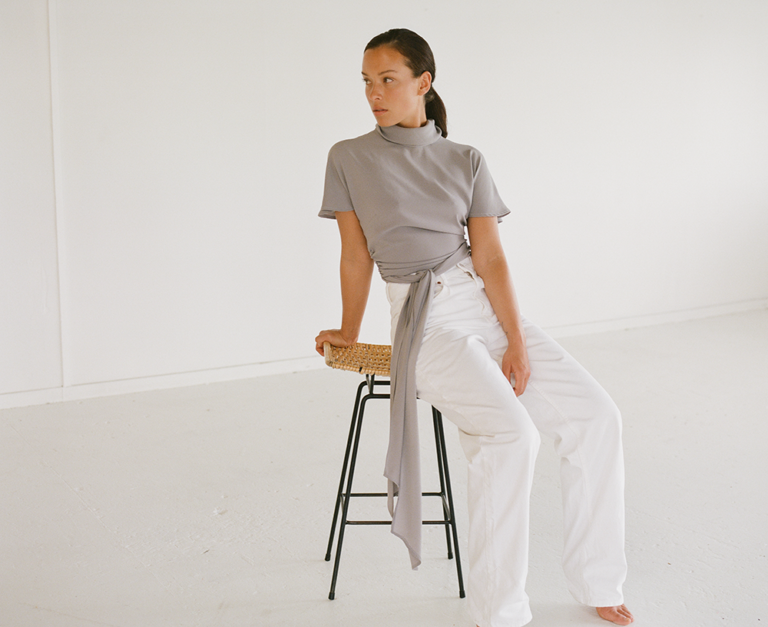
Another designer who’s on the same page is Ellis Hong of namesake label Ellis. Based in Auckland, her womenswear brand initially began as an online store stocking an edit of other labels from all over the globe. However, over time, and largely in response to gaps she spotted in the local market, Ellis organically transitioned to become a considered offering of made-to-order pieces Hong designs herself.
“I feel like a few years ago if you spoke about made-to-order or even told people that everything was made to order, you didn’t get the same response as you do now,” she says. “I really think that customers thought made-to-order had to be very bespoke or quite couture. I feel like they just had some kind of idea in their head. But it’s nice, with all these other brands coming on and doing it as well, that the customer does kind of understand that you can do it with regular items of clothing. People are happy to wait a few weeks — if you really want something, it’s fine.”
Consumer mindsets aren’t the only thing being challenged as part of this shift. As Hong notes, a more flexible approach must be taken when it comes to production processes too.
“In a way, there are things that you can’t control with made-to-order. When you carry stock, you know how much is there and [when] it’s sold out, but with made-to-order, you don’t really know how many orders are going to come in and you can’t forecast particular things in the way you might be able to do with stock. Say if there were garments that sold throughout the week but they were all different and across all different sizes, of course that’s going to work out slower than making 20 of the same garment in a few different sizes that week. So it’s quite a mixed variable that is a bit of a challenge to work with, within the timeframe I give the customer.”
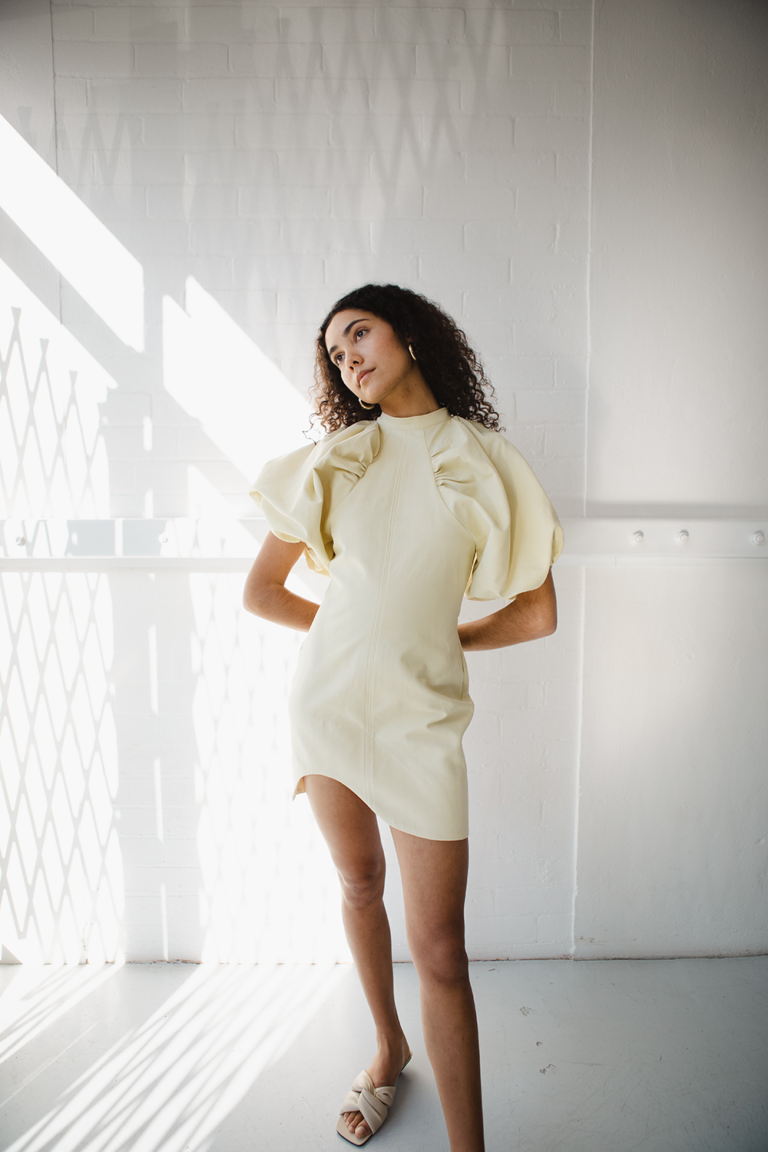
By default, made-to-order slows down production because makers aren’t pumping out high numbers of each piece in a repetitive manner, but although it requires new-found consumer patience, decelerating has some silver linings — one of which, according to Layplan co-founder Talia Soloa, is that “every [item] feels like a gift”.
“Being able to work on something and pour your time and energy into it and see it from start to finish, then give it over to someone… I just hope that translates to the wearer — that it was considered, and it was so thought out, and it was made with love, and it was made with them in mind. To be able to give that to them, I just hope that they feel that when they wear it.”
Soloa and co-founder Lavinia Ilolahia met while studying fashion design at Massey University in Wellington. They became instant friends and began making clothes for fun together in their spare time. The more they wore their creations, the more people started to request them.
“For us, it was a natural progression because we’d always operated that way, so it made sense to move forward with that,” says Soloa. “We started off doing the customs, and people would ask us for stuff and then we’d make it to their measurements or we’d have them over to try things on. So for us, moving into a business and taking made-to-order with us just made sense for how we operated.”
The potential for customisation is another major benefit of made-to-order. For Layplan’s ‘free’-sized offerings, customers enter their bust, waist and hip measurements online when purchasing. It’s a far cry from battling with a poorly cut design under the fluorescent lights of a chain-store fitting room.
“It’s a way for us to have control from start to finish, and work really closely with the people ordering the garments,” says Soloa. “That’s something that’s quite special to us, because size is quite personal. We know that all size 14s aren’t the same, all bodies aren’t the same. It’s been really nice for us to offer a really good fit for someone who might not have that experience in a store or with someone else. So that’s been quite cool for us, to keep it really close and intimate.
“I don’t know if ‘intimate’ is the right word, but it explains it really well,” she continues. “It does feel like quite an intimate process because we ask people for their measurements and then we make to them — it will fit you, and only you. Then you form a relationship. I think it’s quite a special thing to offer, and I hope we can take that moving forward… that if we grow a team, or when we grow a team, that stays the same.”
Instilling a renewed respect in shoppers for the craft of making clothing is a powerful motivator for shifting habits. As made-to-order continues to gain traction for brands like Loclaire, Ellis and Layplan, it seems change really is afoot among consumers.
“We definitely do notice a few names that consistently pop up, says Soloa of Layplan’s growing community. “It’s like, wow, that’s really awesome. It feels like we’re friends, but we actually haven’t met them.”
Although arriving at a made-to-order production method is a journey that takes many forms, there are common threads between the ongoing motivations for making it work. First and foremost, a direct reduction in waste — every piece created has a home to go to.
It also brings about a slower pace that’s so crucial to the fashion industry right now, as well as creating a more personalised experience for customers that, in turn, educates and leads to a greater appreciation for clothing. Keeping better-loved garments in wardrobes, not deserts, for years to come.
Feeling inspired? Discover more about these local made-to-order labels here.


